Can’t have chickens? Consider quail eggs.
 Would you love to have fresh eggs every day, but can’t have chickens due to city ordinances, HOA rules or space limitations? Coturnix quail are small game birds that are becoming a popular, practical and fun alternative to poultry, providing both eggs and meat. Like a poultry farm in miniature, these little game birds produce gourmet quail eggs and meat while occupying only a few square feet of real estate. This makes them a wonderful addition to a small farm or an urban residence. Apartment dwellers can even keep a few of them on a patio, if the management allows pets.
Would you love to have fresh eggs every day, but can’t have chickens due to city ordinances, HOA rules or space limitations? Coturnix quail are small game birds that are becoming a popular, practical and fun alternative to poultry, providing both eggs and meat. Like a poultry farm in miniature, these little game birds produce gourmet quail eggs and meat while occupying only a few square feet of real estate. This makes them a wonderful addition to a small farm or an urban residence. Apartment dwellers can even keep a few of them on a patio, if the management allows pets.
In terms of quail egg production, these tiny birds are superb, producing nearly an egg each day. Quail eggs are large compared to the size of the bird, weighing roughly 8% of the bird’s own body weight (compared to a chicken egg that averages 3% of the bird’s weight.) Both the broilers and the breast meat are highly desired delicacies. As far as breeding is concerned, these amazing creatures begin to lay eggs as early as six weeks of age, making them a highly renewable food resource.
Coturnix quail are also known as “Pharoah,” “Japanese,” or “Bible” quail. There are many breeds of Coturnix quail, including Tuxedo, Texas A&M White, Golden, and many more. This lens will show you how to obtain, raise and care for Coturnix quail for fun, food, quail eggs and profit.
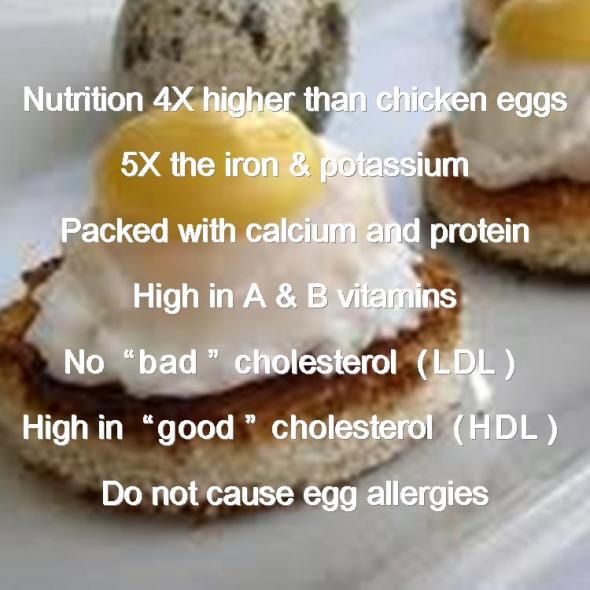 Why Quail?
Why Quail?
When asked why I keep quail in addition to my chickens and turkeys, I have several reasons. First of all, quail eggs are delicious and highly nutritious, surpassing the nutritional content of chicken eggs. Quail start to lay very early in life, as early as weeks of age. Most importantly, my city does not allow chicken roosters, but quail roosters are acceptable. This allows me to hatch quail eggs from my own birds, which, besides being monumentally fun and satisfying, makes my little flock self-sustaining.
Care of Coturnix quail is exceedingly easy. Their housing requirements are minimal. They are docile animals with very few diseases. Most importantly, they eat a small amount of food, for which they produce a large amount of quail eggs. For every two pounds of inexpensive feed that I provide, I receive approximately one pound of quail eggs. Compare this conversion ratio to chickens, for which three pounds of feed is required to produce a pound of eggs.
Granted, quail eggs are small and it can take some time to crack enough of them for an omelet. The eggs tend to increase in size as the bird who lays them ages, growing from approximately 1/4 to 1/3 the size of a medium chicken egg. But if you ask my kids, there is nothing more exciting than discovering your quail’s first eggs (except maybe discovering that a baby quail has hatched.) And quail eggs are the perfect size to fit on an English muffin!
The BIG Questions
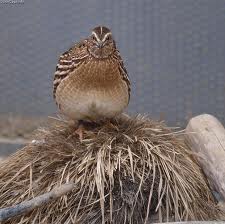
Though they are a very easy breed to raise, there are several important considerations when thinking about keeping Coturnix quail.
Legal concerns:
Areas that do not allow other types of poultry often have no restriction on Coturnix quail. What are the rules concerning Coturnix quail where you live? Call your city or local Department of Game and Fish to find out what laws apply to Coturnix quail. Another option is to Google your city’s rules concerning keeping game birds. Where I live, no permit is needed for Coturnix quail, as they are classified as pets.
Personal concerns:
- Do you have enough time to devote to quail?
- Can you provide a pleasant, healthy and safe environment in which they can live?
- Would you be able to give extra care to them when they are sick?
- Will you be able to cull them, when necessary?
- Do you have the financial resources to purchase supplies and provide for upkeep?
If you are not certain what would be required, keep reading. This article will discuss these responsibilities in detail. If after reading the entire article, you can answer “yes” to all of these questions, Coturnix quail keeping may be a rewarding enterprise for you.

The Starting Line
When you have decided to keep some quail, how will you start? There are 3 general options: hatching eggs, raising chicks, or purchasing adults.
Hatchling quail are tiny and cute, like fluffy bumblebees. It can be very rewarding to watch them hatch and grow. Quail that are gently handled from the start are easier to handle when they are adults. Additionally, if organic practices are important to you, only by raising your own from chicks can you be certain that the eggs and meat are organic. If you want to be certain of a quail’s age, you must raise it yourself.
However, chicks have special equipment and considerations. An incubator is required to hatch the eggs, and tiny chicks need to live in a brooder for several weeks. The babies are fragile and some loss for unidentifiable reasons is to be expected. You may want to purchase one or two extra chicks to cover for possible fatalities. When ordering eggs through the mail, verify the seller’s policy towards replacement of any eggs that may not hatch. If you are willing to do a little extra work and take some risk, raising babies is fun!
On the other hand, adult quail are hardy. They require no extra equipment, nor the attention that small chicks demand. After five weeks of age, you can be fairly certain of their sex, which is important for purchasing males and females in the proper ratio. Additionally, if you want eggs immediately, adult birds are the way to go!
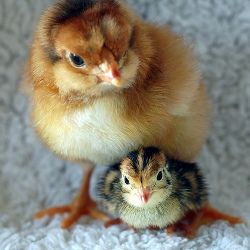
Where to Purchase Quail Eggs, Chicks or Adults
Quail hatching eggs are available online from hatcheries, as well as on eBay and Amazon. Google the term “Coturnix quail hatching eggs” to find sources. I will also ship eggs to interested parties.
Chicks
I have not found many hatcheries that will ship day-old chicks, and those that do ship them require very large minimum purchases, so it is best to find a local source. Search online for local permaculture or small livestock enthusiast groups to see if there are any local breeders selling chicks. Chicks may also be available on Craigslist. There are generally more chicks available in the spring than during the rest of the year. Ask how old the chicks are, and wait until they are at least 3 days old before you purchase them, as most hatchling fatalities occur within the first 72 hours.
Adult birds
Adult birds are sometimes available at feed stores and pet stores. Call around to find out which local stores have them in stock and the age of the birds that they are selling. If a store or private seller cannot tell you the exact age or give you a reasonable estimate, look for another source from which to purchase. Disreputable sellers may send you home with birds that have passed their prime egg-laying season, which occurs within the first year of life.
When purchasing chicks or adults, look for lively specimens. Chicks should be clean, dry, clear-eyed and active. Adults should also have clear eyes and nostrils, and their feathers should be smooth. A mated female may have a few feathers missing on her back, but should appear to be otherwise healthy. If possible, get a recommendation for a reputable seller, although this may be difficult due to the relative scarcity of sources.
Hatching Quail Eggs
Hatching eggs is an exciting venture. Whether you will start from scratch with purchased eggs or attempt to hatch eggs laid by your own hens, you will need an incubator. Quail hens are not broody and rarely set their own eggs, so you will need to gather them for hatching.
Place the eggs in a shallow container or quail egg carton with the large end up. Store the eggs in a humid area or refrigerator with a temperature of approximately 55-60º F. Eggs will store for up to seven days before being moved to your incubator, but will lose fertility a little 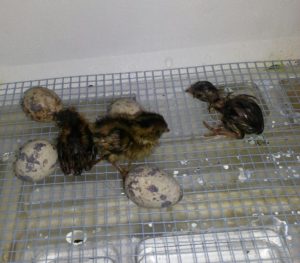 bit each day. Incubate them as soon as possible for the best results.
bit each day. Incubate them as soon as possible for the best results.
Incubator preparation
To prepare your incubator, read and follow the manufacturer’s instructions. Use the incubator’s thermometer and hygrometer to set the temperature to 99.75º F and the humidity level to 65% (or the recommended by the manufacturer) before placing the eggs in the trays. If you do not have an automatic egg turner in your incubator, turn your eggs four to five daily to prevent the embryos from sticking to one side of the egg. When turning by hand, mark one side of each egg with an ‘X’ using a permanent marker or felt-tipped pen to keep track of which ones you have already turned. Rotate eggs 180 degrees, placing the ‘X’ will on top one time and on the bottom the next time.
Nearing hatch day
On day 15, increase the humidity to 80-85% and stop turning the eggs. If you have an automatic egg turner, remove it, or it may crush the tiny chicks. You should expect to see the chicks beginning to hatch on day 17.
Leave your eggs in the incubator, checking them often during the last few days because some may hatch early. Watch for your quail chick to pip the egg, making a small hole in the shell with its beak. It may take a while to come out of the shell, up to 10 hours. It will take a few more hours for its downy feathers to dry after it hatches. Hatched chicks can stay in the incubator for a day before transferring them to a brooder.
This is the incubator that I use for hatching quail eggs
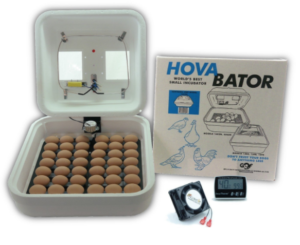 Incubators very widely in price and features. The HovaBator is a very efficient little unit that comes complete with thermometer, snap action thermostat and easy-to-clean sanitary liner. I recommend using a unit with a fan that circulates the air to prevent hot and cold spots. This is the model that I personally use and recommend. You will need to purchase quail rails for the HovaBator separately.
Incubators very widely in price and features. The HovaBator is a very efficient little unit that comes complete with thermometer, snap action thermostat and easy-to-clean sanitary liner. I recommend using a unit with a fan that circulates the air to prevent hot and cold spots. This is the model that I personally use and recommend. You will need to purchase quail rails for the HovaBator separately.
Temperature variation within the incubator has a very significant impact on hatch rates. Heat naturally rises, so you need to circulate the hot air from the hot spots to the cool spots for a much more uniform and consistent temperature and better hatch results. This product has an excellent air fan kit that does the job.
There are other good incubators models available on Amazon, but I recommend that you choose one with a fan kit for circulated air, which will improve your hatch rates. I do not recommend cheaper still-air models. They are inexpensive, but are not very effective.
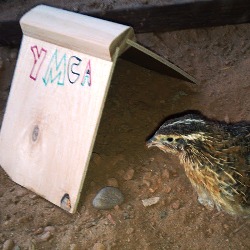 Maximizing Egg Productivity and Fertility
Maximizing Egg Productivity and Fertility
If you already have a covey of birds and want to hatch the eggs that you collect from your own birds, here are some considerations to maximize your success. Breeding websites recommend keeping one male for every 4-5 females for high egg fertility. In my experience, one male for every six females provides adequate fertility without the fighting amongst males that can occur when competition for the females is too high.
Ideal breeding months
Ideal breeding months are March through September, when the days are long. During the winter when the days are short, egg production will decrease unless supplemental lighting is provided. Provide at least 14 hours of light per day using a timer to turn on your lights early in the morning. The number of hours of daylight + the number of hours of supplemental lighting = 14 hours of total light. So, if the sun is rising at 6:30 am and setting by 5:30 pm, providing 11 hours of daylight, you should set your timer to turn on the supplemental lights from 3:30 to 6:30 am in order to add an extra 3 hours of light to their day. One incandescent bulb or a couple of strings of old fashioned Christmas lights are adequate. Do not use LED lights as they do not provide the proper light spectrum to spur egg production.
Female quail maturity
Females begin to lay fertile eggs by 2 months of age, and are most productive in their first year of life. In the second year, egg production decreases and may completely stop by 2 years of age. If you are breeding for profit, take this into consideration and plan for culling or removing order birds to another pen to live out their lives naturally. Coturnix quail can live up to six years in captivity, but their lifespans are generally about half that long.
Supplemental Lighting for Maximum Egg Production
Young, female Coturnix quail lay an egg nearly every day during the spring and summer months. During the fall, when the number of daylight hours decreases, egg production declines, and may cease completely during the winter when the days are short. Some Coturnix quail owners prefer to allow their hens to rest during the winter. However, since quail have a short life span, I prefer to take advantage of the first year of life, when egg production is maximal. I encourage the hens to lay year round by adding supplemental lighting. Supplemental lighting that lengthens the hours of light to which quail are exposed to 14 hours daily will cause the hens to continue laying in the winter months. In my experience, egg production will decline somewhat in the winter, no matter how much light is added to their environment, but the added hours of light can prevent egg production from ceasing altogether.
Note: LED lighting is not effective in stimulating egg production. Choose incandescent bulbs to maximize winter egg production.
 Giving Chicks a Great Start
Giving Chicks a Great Start
Raising quail chicks can be addictive! And their needs and care are very simple with a little knowledge and the right equipment. A rubber storage tub or small, plastic kiddie pool can make a healthy and comfortable brooder.
While or eggs are in the incubator or before you purchase chicks, gather your supplies and make a nursery (brooder) for them so that it is ready when they arrive. A brooder can consist of any container that is large enough to house chicks and protect them from drafts.Even a large cardboard box can make a comfortable brooder. Additionally, you will need the items listed below.
Heat
Baby chicks do not regulate their body temperature very well. Provide a heat lamp with a red bulb to keep them warm. Red bulbs are recommended, as they are more soothing to the chicks than a bright, white bulb. Leave the bulb on all day and all night. Keep the brooder at 100 degrees the first three days, dropping the temperature to 95 for the first week following, 90 degrees the second, 85 degrees for the third, and so forth until the temperature reaches 70 degrees or the chicks have lost their down and are fully feathered (about 5 weeks.) Temperature is decreased by raising the height of the lamp, increasing the distance between the bulb and the brooder.
If you do not have a thermometer for the brooder, it is not necessary to purchase one. Place the heat lamp at one end of the brooder with room for the chicks to escape the heat, if they need relief. When chicks are chilly, they will huddle together under the bulb. If they are too warm, they will move away from the bulb to the cooler end of the brooder. You can also raise or lower the lamp to increase or decrease the warmth that the chicks receive if you notice that they appear to be too hot or cold.
Water
Provide chicks daily with fresh, clean, cool water. Jars with special bases that are too narrow for chicks to fall or step into are recommended for quail babies. They prevent chicks from getting soaked, which is deadly to quail chicks, and they help to keep the water free of fecal matter. If lf you use wood chips as bedding, elevate the waterer a slightly to prevent debris from clogging it. You may need to dip your chicks’ beaks into the water to teach them where it is. Be sure that more than one chick can drink at once to prevent a “bully” from keeping the others away.
Some quail owners add sugar, apple cider vinegar, or infant vitamin drops to the water. Sugar gives the new chicks a boost. Add 2-3 tsp per quart of water. Apple cider vinegar seems to help prevent “pasting up,” a potentially deadly condition that we will discuss later. Liquid infant vitamins (such as Poly-Visol) can give your chicks a great nutritional start. Just be certain that they do not contain extra iron. All of these additives are entirely optional.
Chick Starter Food
Feed chicks game bird or turkey starter “crumble” or “mash.” If you want your quail eggs or meat to be organic, they should be fed only non-medicated, organic starter feed. They will eat this starter feed throughout their entire lives. Allow quail to eat as much as they want. They self-regulate well.
Feeder
Use a feeder that the chicks can reach, with a stable base that can’t be tipped, that will feed more than one chick at a time and which reduces feed waste. Small jar or trough feeders are suitable, and they can be obtained at pet stores, feed stores or online.
Small amounts of vegetables & fruits are okay for dessert once they are a few weeks old, but limit the amounts as it will lower their protein intake, which efffects growth and egg-laying capability.
A Ventilated Cover
Chicks need plenty of air-flow, so protect the brooder with a ventilated cover, such as a window screen or piece of plastic poultry mesh. Tiny quail begin to practice using their wings and will quickly be able to jump and fly high enough to escape most brooders. A cover will prevent their escape and also protect quail from household pets and small children, who can unwittingly be their most dangerous predators! Be certain that the cover is flexible, as quail tend to jump straight up into the air and bump their heads on the top of the brooder. This can be fatal if the cover is hard.
Bedding.
Provide a soft, absorbent surface in the bottom of your brooder. Wood chips are suitable. However, do not use pine or cedar bedding as they can be toxic. I have found that confused chicks will sometimes eat the chips instead of their crumble, so I prefer to line the brooder with a clean beach towel. Towels are soft, absorbent, and are easy to change when they get dirty or wet. Do not use paper towels, newspaper, or any other slippery surface that may cause leg problems, such as “spraddle legs.” See the section of “Chick Problems and Solutions” for more explanation of this condition.
Additional Considerations
As chicks begin to grow larger , they need about 1/2 square foot of floor space in the brooder. generally start chicks off in a plastic tub, and move them to a larger kiddie pool when they are a couple of weeks old.
Cautions
~Chicks of greater than a few days age difference should not be raised together in the same brooder.
~Don’t mix chicks that you have obtained from different sources, unless you are certain that they free of disease.
~There is no need to ration their feed. Allow them to have as much as they want to eat.
~Don’t get upset about losing a chick. Do the best you can to provide a healthy environment, recognizing that some chicks are hardier than others.
By following these guidelines, you will provide a healthy and pleasant home for your tiny, new chicks.
Watering Supplies
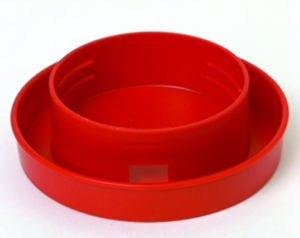 Quail chick waterers consist of a base and a jar. Most bases will fit a quart-sized canning jar. Quail waterers are specialized with a very narrow drinking trough that prevents the chicks from getting wet. This is the only type of base that you should use because a damp chick is a sick chick.
Quail chick waterers consist of a base and a jar. Most bases will fit a quart-sized canning jar. Quail waterers are specialized with a very narrow drinking trough that prevents the chicks from getting wet. This is the only type of base that you should use because a damp chick is a sick chick.
Vitamins and Water Additives
We all know the benefits of vitamins for growing babies. Add some liquid infant vitamins to your chicks’ water. Just be certain not to purchase a vitamin brand that has extra iron, which is not healthy for quail. Vitamins that have been in water for a few hours are no longer potent, so change the water and add fresh vitamins every day.
When choosing a brand of apple cider vinegar, ensure that it contains the “mother.” This is the bacteria that turns the juice to vinegar. It contains healthy probiotics that will give your birds a healthy start and help them to resist disease.
Problems that You May Encounter
Splayed Legs (also known as “Spraddle” or “Straddle” Leg)
Spraddled legs ay occur when a newly hatched chick cannot get good footing in the incubator or brooder. They slip and basically do the splits, damaging their hips so that their legs splay outwards. If treated right away, the condition is often reversible. Use a small bandage or a piece of vet wrap to hold the legs together at the width of the chick’s hip joints for a few days until the legs heal. Chicks heal very quickly when given the proper treatment. To prevent the condition, make certain that the incubator and brooder surface is sufficient to grip when your chicks walk around. Wood chips or a beach towel are good options.
Another option is to make a “chick chair” to rest the leg at the correct angle for healing.This is one of our little chicks receiving some therapy for slipped hock joint.
For more information about orthopedic problems in chicks or for instructions on how to make a chick chair, visit the following websites:
Pasting Up
Inspect chicks often for a condition called “pasting up”, in which their droppings stick to them and block their vent (posterior opening.) This can prevent them from passing more droppings. Dried feces will be stuck to e outside of a chick who presents with this problem, totally or partially covering their vent. This must be attended to immediately has it can be fatal.
It is a very simple process to resolve a pasted vent. Apply a warm, wet paper towel to the area and then gently use a toothpick to clear any blockage that remains.
Keep checking any bird that develops this condition as it often returns throughout the first week.
Eye Infections
Eye infections are common in many breeds of birds, Coturnix quail included. If you inspect your birds daily, you will be able to catch the formation of an eye infection before it becomes serious. I have found that, if caught early, most eye infections can be cleared up by washing the eye with sterile optical saline solution or a vetrinary eye wash, such as Veterycin Ophthalmic Gel.
Wearing surgical gloves, hold the bird’s body and head still with one hand, and drop saline into the eye generously so that the bird begins to blink rapidly. Do not touch the eye with the saline bottle dropper so that it does not harbor the bacteria that is causing the infection. Isolate the bird from the others and wash your hands thoroughly with antibacterial soap. Repeat two or three times per day, until the infection is completely clear.
If the infection worsens or begins to have a bad odor, treat with Terramycin or other vetrinary antibiotic. Consult your local feed store, pet store or vet to obtain antibiotics for your birds.
Kids and Chicks
 Children love to handle fluffy little chicks. With proper instruction and supervision, this can be a wonderful experience for the child and the chick, alike.
Children love to handle fluffy little chicks. With proper instruction and supervision, this can be a wonderful experience for the child and the chick, alike.
However, chicks are very fragile and die easily if squeezed or dropped. Their legs can be irreparably damaged if they jump out of a child’s hand to the floor. Teach children to always wait for you to hand them a chick from the brooder. Have the child sit down on the floor with crossed legs, and to hold the chick gently with tow hands; one hand across the chick’s back and one hand under its bottom. Chicks need be kept warm, so they should only be kept out of the brooder for short periods of time.
Allow children to care for the chick’s physical needs, such as helping to give them water and food. Help children to bond with the animals, and develop a sense of responsibility and empathy for the tiny creatures whose lives depend upon their care. I have found that when my children bond with the birds when they are young and cute, they are more willing to help with their care when the birds are older.
Quail Aviaries
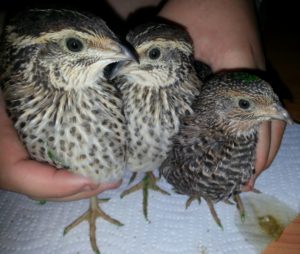 When your quail are between 5-7 weeks old and fully feathered, it is time to move them outdoors. I recommend one of two options for your aviary. Since quail are known to jump and fly straight up when startled, they can bump their heads if the ceiling is not at the proper height. One option is a tall aviary of at least 6 feet in height that will allow birds to fly up and descend before reaching the roof. Another option is a low hutch with a roof that is approximately 2 to 3 feet high that will not allow them to get enough velocity to harm themselves. A rabbit hutch would be suitable,though I would recommend attaching a thin layer of padding to the ceiling.
When your quail are between 5-7 weeks old and fully feathered, it is time to move them outdoors. I recommend one of two options for your aviary. Since quail are known to jump and fly straight up when startled, they can bump their heads if the ceiling is not at the proper height. One option is a tall aviary of at least 6 feet in height that will allow birds to fly up and descend before reaching the roof. Another option is a low hutch with a roof that is approximately 2 to 3 feet high that will not allow them to get enough velocity to harm themselves. A rabbit hutch would be suitable,though I would recommend attaching a thin layer of padding to the ceiling.
I have a 6 foot tall aviary with a 4′ x 8′ dirt floor. Hardware cloth walls attached to a wooden frame provide a secure home with lots of ventilation, which is critical to quail health. A shingled roof keeps them dry. We considered burying chicken wire in the ground under the bottom of the frame to prevent the birds from digging their way out or the dog from digging her way in, but opted instead to pile up a layer of landscape gravel around the outside edge.
The dog was sniffing around the edge of the cage and the quail seemed nervous about it, so I ran a bamboo privacy barrier around the edge.
We keep feed in a metal container next to the aviary, away from the area where we house our turkeys. This makes it easy to refill the quail feeder and prevents us from accidentally giving the quail the turkey grower feed, which is not healthy for them. Additionally, it prevents disease from passing between the quail and the poultry.
Inside the Aviary
 Quail have very simple housing needs. Provide about 2 square feet of floor space per bird. The minimum ratio of males to females is 1:3, but I think it is much better to have five or six females per each male. This prevents the females from being crowned (mated) too often, which can cause them stress and even the loss of some feathers on their backs.
Quail have very simple housing needs. Provide about 2 square feet of floor space per bird. The minimum ratio of males to females is 1:3, but I think it is much better to have five or six females per each male. This prevents the females from being crowned (mated) too often, which can cause them stress and even the loss of some feathers on their backs.
Feeders
Provide a feeder that allows more than one quail to eat at once and allow them access to food at all times. They will east between 1/2 and 1 oz per day. Provide some supplemental oyster shell for calcium, which will help to prevent eggs laid without a shell (yes, this happens!) Continue to feed adult quail the turkey starter feed, or switch to non-medicated chick starter feed at about 6 weeks of age. If you choose to feed them treats such as veggies or fruits, limit them. Quail need a lot of protein to produce eggs. Insects and meal worms make an excellent snack. My birds go crazy for grape leaf skeletonizer caterpillars, which are prolific on my grapevines every summer.
If your quail eat anything other than commercial feed, they will need some grit added to their food. Grit is made of small stones, and it acts like teeth, aiding the bird in grinding their food. Do not give them too much grit, however. Sprinkle it over the top of their food as though you were “salting” the food with it.
Water
Two watering devices are recommended as a precaution in case one goes dry or gets spilled. Quail can live without food for a day or two, but they cannot survive even a few hours without water. Elevate food and water sources to prevent them from becoming clogged or contaminated with bedding material. You no longer need to keep the narrow base on your waterer, and can switch to any type of poultry waterer that you prefer.
Flooring and Roosts
The floor can be dirt or wire. Provide some soft wood chips or straw for bedding, and change the bedding often. It makes a wonderful addition to a compost pile.
Quail do not roost, so no perches are necessary. They do appreciate having some planks to climb and a few hiding places. Small shipping boxes with holes cut in them for doors work well, and they can be discarded when they get too dirty.
Gates
I recommend having a self-closing hinge on the aviary door to prevent the door from accidentally being left open. I used on old trampoline spring to keep the door closed, connecting it to the door frame and the door itself so that it springs back into place on its own. If a quail escapes out of the door, keep you eyes on it closely! Their main defense is camouflage, so they will blend into the environment quickly and be very hard to find. Fortunately, they do not fly long distances, so recapture is possible. If you can’t find them, move away to an unobtrusive spot and watch. Quail often return to the area to be near the covey.
Quail health
If quail are not on a dirt floor, provide a dust bath consisting of a container of dirt mixed with sand and food-grade diatomaceous earth (DE is optional.) The birds will jump into the container and toss the dirt over themselves. This will help to keep your birds clean, cool and free of mites. You can also sprinkle DE onto bedding to help fecal matter to dry out faster, which reduces odor and flies in the aviary.
During the summer, provide plenty of shade and some shallow dishes of water in which to wade. I use terra cotta dishes that are generally used for planters. They are about an inch deep. I keep them filled with clean water and change them daily as they get very dirty quickly.
Have a separate cage or kennel available to quarantine a bird that is sick or hurt. If a bird is bleeding, keep it away from the flock until it is healed as the other birds may instinctively peck at the wound and do even further damage.
Maximizing egg production in winter
Finally, if you want to keep egg production high in the winter, provide incandescent lighting that turns on early in the morning, increasing the hours of light to which the birds are exposed. When days are short, egg laying decreases without this supplemental light. Plug the lights into a simple timer that turns on automatically early enough in the day to expose the birds to 14 hours of light per day. Some people prefer not to provide the supplemental light, to allow the females a rest during the winter.
In my experience and in discussing this issue with other quail enthusiasts, quail that lay all year long tend to live for about 1-2 years. The average lifespan of a quail that does not lay year-round is 2-3 years. Egg production tends to decrease as the quail age, and some keepers cull their birds for stewing meat when egg production slacks off. In this case, supplemental lighting may be beneficial. If, however, you consider your birds to be pets instead of purely production animals, you may want to allow them a rest period that will increase their natural lifespan.
Bedding
When purchasing bedding, avoid cedar or pine shavings that can be toxic to birds. Also, select only food-grade Diatomaceous Earth (DE) for use in dust baths.
The Quail Medicine Cabinet
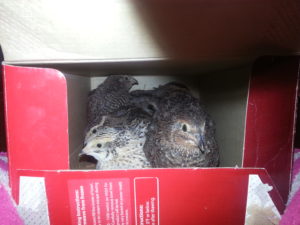 Quail have very few diseases or health issues that first aid won’t solve. These are a few items that I recommend to keep handy for routine healthcare and emergencies.
Quail have very few diseases or health issues that first aid won’t solve. These are a few items that I recommend to keep handy for routine healthcare and emergencies.
First of all, keep disinfectant soap handy, along with a bucket and scrub brush. The best way to keep your quail happy and healthy is to keep the aviary clean. On a regular basis, wash the aviary with soapy water, and replace cardboard hiding places. Twice per year, disinfect the entire aviary with your product of choice (a 10% bleach solution works well.)
You can also use the soap and water to clean the quail’s feet if they get fecal matter caked on their toes, which happens once in a while and is very unhealthy for the bird.
Additionally, keep a box handy with the following items:
~Vetericyn All Animal Wound and Skin Care (an all-purpose treatment for external bacterial, viral and fungal infections)
~Rooster Booster No-Pick Lotion (made for poultry, but can also help to heal wounds on quail.)
~Duramycin or other veterninary antibiotic to use only if a quail shows signs of severe respiratory distress or eye infection. (Antibiotic use is a last resort for organic quail, and eggs should not be eaten for several weeks after treatment.)
~Neosporin (NO triple antibiotic. Quail are allergic to lidocaine, benzocaine, or anything else in the “-caine” family.)
~Optical saline solution to treat eye infections
~Apple cider vinegar
~Mineral oil (to help heal wounds and remove fecal matter from toes)
~Hydrogen peroxide
~Rubber gloves
~Cotton balls
~Saline solution (quail eyes get infected easily.)
Finally, though it may seem unusual, one of the best treatments for quail is plain yogurt with live, active probiotic cultures. The birds love it, and it seems to give keep birds healthy and to provide an ailing quail with a boost towards recovery. I put a small bowl of yogurt in the aviary every few days.
Care for your quail’s health and they will, in turn, provide you with abundant, healthy eggs and meat.
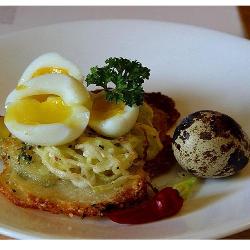 Economic Potential
Economic Potential
Interest in keeping small livestock is on the rise. For city dwellers, chickens are sometimes not an option due to space considerations, HOA rules, or apartment living. Quail are a viable option in such cases, allowing their keepers to have their own renewable source of eggs and meat. Here are some examples of how quail has benefit our family economically:
1. Eggs.
Eggs are the main product of quails. What we don’t eat, we sell to customers we have obtained from our church, garden clubs and our circle of friends. We package the eggs in recycled produce containers or carton boxes for larger orders. The eggs sell for $2.50 per dozen. We could easily sell them for more money to local restaurants, if we were so inclined.
2. Broilers/stewers
Quail have a relatively poor feed to meat conversion ratio of 3:1 for broilers, so we do not raise any specifically for meat. However, if we have too many males after a hatch, or a quail is wounded and needs to be culled, in which case we will dress them for broilers if they are young, or stewers if they are older than 3 months. The procedure in dressing quail is the same as in chicken. The bird is killed by hitting its head quickly on a metal pole, and then the head is removed with sharp poultry shears. Birds are bled and scalded in hot water (about 135 degrees F,) and the feathers are removed. Evisceration follows. The dressed birds brined in salt water and then frozen.
3. Breast meat
Quail breast meat is very tender and tasty, and is highly sought after by gourmet chefs and foodies. We dot not currently have plans to sell the meat, but it is a possibility for the future. Harvesting breast meat is much easier than preparing a broiler as it does not require removal of the head, feathers or entrails. The bird is killed and the breast meat is cut out and prepared. The rest of the carcass is discarded. We bury them in deep holes around our trees for natural fertilizer.
4. Fertilized eggs and young birds
Currently in my area of the country, there are relatively few people who sell fertilize eggs or birds to the public. This creates a situation in which there are few sources for those who want to start a new covey, or those who want to introduce new bloodlines to their existing coveys. 3-day-old birds sell for $1.50-$2.00 each, or $8-$12 for adults. Fertile eggs are priced according to how many are purchased, averaging $.50 per egg.


